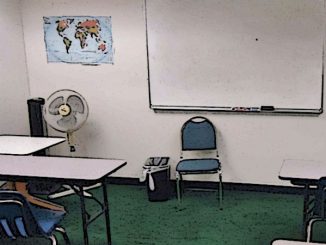
One of my favorite parts of teaching religious education is introducing young people to various forms of prayer. In addition to starting sessions with three traditional prayers—the Our Father, the Hail Mary, and the Glory Be to the Father—I’ve led them in lectio divina and guided reflection.
When I mentioned to another catechist that I was doing lectio divina with seventh graders, she questioned how that worked, unsure that the technique was one young people could handle. But using my Finding God catechist text as a guide, the first experience leading the prayer form with this group went fairly well. The Scripture text we used was Mark 12:28–34, the Great Commandment.
If you’re unfamiliar with this ancient form of prayer, its name means “sacred reading” and it uses a Scripture passage as a means for bringing us into conversation with God. As Finding God explains:
To get ready for lectio divina, quiet your thoughts. The first step is to read a Scripture passage slowly. The second step is meditation—letting the words sink in and echo within you while you reflect on what God might be saying to you. The third step is prayer. God speaks to you, and you respond with your own words. The final step is contemplation, sitting quietly with God, beyond words and feelings. (Grade 7, page 52)
The young people sat quietly during the prayer time as I led them through the steps, and for a first experience of this prayer form, it seemed to go smoothly, judging from the fact that the group remained quiet and didn’t seem restless—which hasn’t always been my experience in introducing this prayer form.
The following week, it was time to try guided reflection. Again using a tool provided by our Finding God curriculum, I played a CD track of a prayer based on how we are each “Called by Name.” I prepared the group for the prayer by warning them it would be a long time of being quiet and it might take some practice to get into this type of praying—using imagination to have a conversation with Jesus. I told them that I particularly like this form of prayer. And then I said that if they find themselves not liking the way we are praying or their minds wandering, that that was ok, as long as they respected others in the room by being quiet while classmates were trying to enter into the prayer. Giving them that permission to “not get it” was important to establish trust and tone.
During the prayer time itself, there were some giggles, but I tried to quell those by walking nearer the gigglers and I don’t think it disturbed those who did seem to be focused. When the prayer was over, I invited comments or questions about the way of praying. Though the only comment offered was a critique of the voice in the recording, it was good to offer the group time to process their prayer experience. I affirmed the group by telling them that I know it is hard to stay quiet for so long, but that they did a good job and will get the chance to practice praying this way again in future sessions.
I’m encouraged by these first attempts at these two prayer forms, and I look forward to walking with my students to deepen our prayer lives this year. How do you walk with your students in deepening their prayer lives?




Be the first to comment